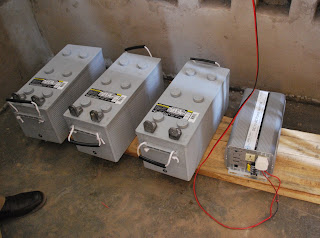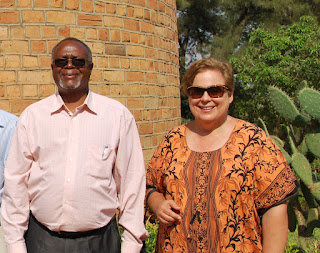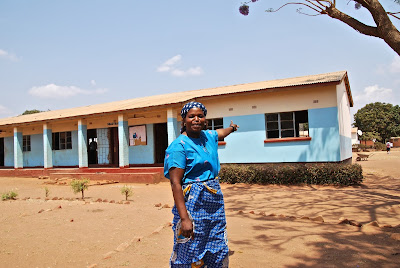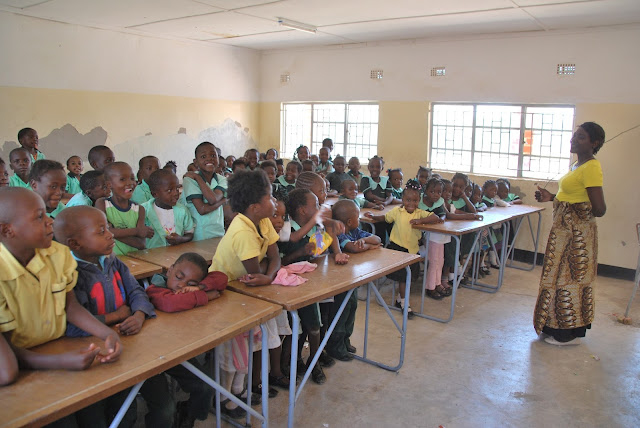I’m constantly reminded why I’m here when I see the faces of
the children, witness the commitment of the volunteer teachers, experience the
beautiful singing, and encounter the genuineness of the people. An additional “perk” is running into
others that come for various reasons to support the Zambians. The past few days I had such an
experience.
 |
| Karl Klontz, Shane and Rev. Zimba |
About 6 or 7 months ago Dr. Karl Klontz, a physician,
contacted Dr Chilenje to ask about installing solar panels in Malawi or Zambia. It was decided that this would be an
excellent opportunity for Chasefu Theological College to have power. The seminary students are housed in a
small hostel with only small individual solar lights. Dr. Klontz and his recent college graduate friend Shane,
spent several days along with Rev. Zimba completing the project.
The solar panels were installed on the roof the first
day.
The wiring from the panels to
the large batteries as well as light fixtures, took a few more days. Finally the hostel has light and the
students have the ability to charge their cell phones and lap tops.  |
| Mubuchi gets ready to switch on the lights |
While visiting the hostel and witnessing “light” coming to
the students, I was also able to visit the borehole financed by our family and friends; another project that provides infrastructure. A few years ago our son Evan and
daughter-in-law Sarah wanted to do something for Zambia in honor of their dad,
Bob. They had saved a large sum of
money that started the project. At
the time of Bob’s mother’s death some friends and family donated funds in her
honor. It was her wish to
bring water somewhere in Zambia. After consulting with mission co-worker Nancy about possible
places for a borehole, we decided on Chasefu where seminary students are
trained. With the funds from our
children, our friends, and the balance from us, the borehole project was
purchased. Chasefu not only trains
Presbyterian ministers but is developing a demonstration farm that will
generate income for the seminary. The
borehole will also bring water for irrigating the farm. I was pleased to not only see the
seminary students using the borehole but several women and children from the
nearby village filling their containers.
 |
| Some of the seminary students posing with me. |
Boreholes and solar projects can change lives. Women no longer need to walk several
kilometers to and from the stream each day for water. A borehole can save hours of time and provide healthy water
for drinking, cooking, and bathing.
Solar projects allow students to study longer and communicate more
effectively through use of computers, cell phones, and other electronics. Providing more light and life giving
water to the seminary students seemed fitting since they bring spiritual light
and life to those they serve.
 |
| Shane poses with seminary students |
If you are interested in donating to either a solar project
or borehole let me know.










































